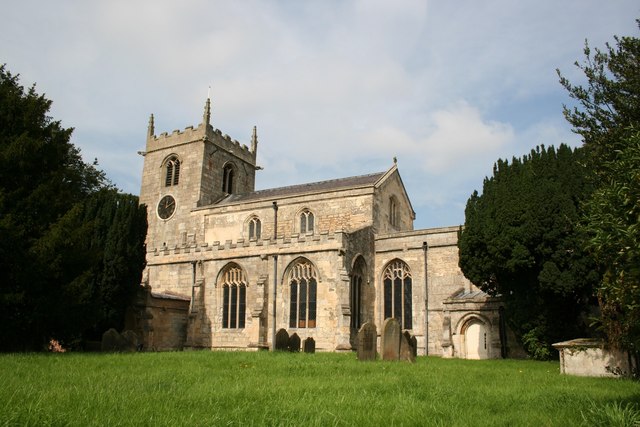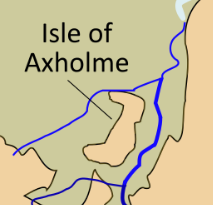Isle of Axholme on:
[Wikipedia]
[Google]
[Amazon]

 The Isle of Axholme is a geographical area in England: a part of
The Isle of Axholme is a geographical area in England: a part of
Isle of Axholme Internal Drainage Board website
and manages the water levels of the adjacent Thorne Moors and Hatfield Moors, both environmentally sensitive areas.
An Isle of Axholme News SiteHistory of the Isle of AxholmeIsle of Axholme information siteIsle of Axholme Internal Drainage Board websiteHistory of the northern area of the Isle of Axholme Eastoft - Gateway to the Isle of Axholme
* {{DEFAULTSORT:Axholme, Isle of Geography of Lincolnshire Former islands of England

 The Isle of Axholme is a geographical area in England: a part of
The Isle of Axholme is a geographical area in England: a part of North Lincolnshire
North Lincolnshire is a unitary authority area in Lincolnshire, England, with a population of 167,446 in the 2011 census. The borough includes the towns of Scunthorpe, Brigg, Haxey, Crowle, Epworth, Bottesford, Kirton in Lindsey and Bar ...
that adjoins South Yorkshire
South Yorkshire is a ceremonial county, ceremonial and metropolitan county, metropolitan county in the Yorkshire and Humber Region of England. The county has four council areas which are the cities of City of Doncaster, Doncaster and City of Sh ...
. It is located between the towns of Scunthorpe and Gainsborough Gainsborough or Gainsboro may refer to:
Places
* Gainsborough, Ipswich, Suffolk, England
** Gainsborough Ward, Ipswich
* Gainsborough, Lincolnshire, a town in England
** Gainsborough (UK Parliament constituency)
* Gainsborough, New South Wales, ...
, both of which are in the traditional West Riding of Lindsey, and Doncaster (in South Yorkshire).
Description
The name ''Isle'' is given to the area since, prior to the area being drained by the DutchmanCornelius Vermuyden
Sir Cornelius Vermuyden ( Sint-Maartensdijk, 1595 – London, 11 October 1677) was a Dutch engineer who introduced Dutch land reclamation methods to England. Vermuyden was
commissioned by the Crown to drain Hatfield Chase in the Isle of Axholm ...
, each town or village was built on areas of dry, raised ground in the surrounding marshland. The River Don used to flow to the north and west (it has since been diverted), dividing the Isle from Yorkshire
Yorkshire ( ; abbreviated Yorks), formally known as the County of York, is a historic county in northern England and by far the largest in the United Kingdom. Because of its large area in comparison with other English counties, functions have ...
; the River Idle
The River Idle is a river in Nottinghamshire, England whose source is the confluence of the River Maun and River Meden near Markham Moor. The Idle flows north from its source through Retford and Bawtry before entering the River Trent at West ...
separates the Isle from Nottinghamshire
Nottinghamshire (; abbreviated Notts.) is a landlocked county in the East Midlands region of England, bordering South Yorkshire to the north-west, Lincolnshire to the east, Leicestershire to the south, and Derbyshire to the west. The trad ...
; and the River Trent
The Trent is the third-longest river in the United Kingdom. Its source is in Staffordshire, on the southern edge of Biddulph Moor. It flows through and drains the North Midlands. The river is known for dramatic flooding after storms and ...
separates the Isle from the rest of Lincolnshire. Three towns developed here: Epworth, Crowle and Haxey
Haxey is a town and civil parish on the Isle of Axholme in North Lincolnshire, England. It is directly south of Epworth, south-west of Scunthorpe, north-west of Gainsborough, east of Doncaster and north-west of Lincoln, with a population of ...
.
The boundaries of the Isle of Axholme usually match with those of the ancient '' wapentake'' of Epworth and its 17 communities as listed in the Domesday Book
Domesday Book () – the Middle English spelling of "Doomsday Book" – is a manuscript record of the "Great Survey" of much of England and parts of Wales completed in 1086 by order of King William I, known as William the Conqueror. The manus ...
of 1086: Belton, Crowle, Epworth, Haxey, Beltoft, (High and Low) Burnham, Owston Ferry, (East) Lound and (Graise)lound, Garthorpe, Luddington, Amcotts, (West) Butterwick, Althorpe, The Marshes, Waterton, Upperthorpe, and Westwoodside. Other settlements on the Isle include Eastoft, Sandtoft – home to Europe's largest trolleybus museum – and Wroot
Wroot (pronounced ) is a linear village and civil parish in North Lincolnshire, England, south of the River Torne on the Isle of Axholme, close to the boundary with South Yorkshire. The population at the 2011 census was 455.
History
The name Wr ...
.
Much of the northern part of the Isle has flat topography, with rich farmland used mainly to grow wheat and sugar beet. The land is particularly fertile due to its history of annual flooding from the Trent and peat soil which was created by dense ancient woodland which covered much of the Isle. Even today, in many parts of the northern Isle, petrified wood can be found at about six feet below ground; relics from this woodland, these are locally called "bog oaks".
A long-distance walking route, the "Peatlands Way", traverses the Isle.
Etymology
''Axholme'' means "island byHaxey
Haxey is a town and civil parish on the Isle of Axholme in North Lincolnshire, England. It is directly south of Epworth, south-west of Scunthorpe, north-west of Gainsborough, east of Doncaster and north-west of Lincoln, with a population of ...
", from the town name + Old Norse
Old Norse, Old Nordic, or Old Scandinavian, is a stage of development of North Germanic dialects before their final divergence into separate Nordic languages. Old Norse was spoken by inhabitants of Scandinavia and their overseas settlemen ...
''holmr'' "island". The name was recorded as ''Hakirhomle'' in 1196. The Old English suffix "ey" in "Haxey" also indicates an island.
Historical descriptions
1833 description
1911 description
Land drainage history
The Isle is known for the early influence ofCornelius Vermuyden
Sir Cornelius Vermuyden ( Sint-Maartensdijk, 1595 – London, 11 October 1677) was a Dutch engineer who introduced Dutch land reclamation methods to England. Vermuyden was
commissioned by the Crown to drain Hatfield Chase in the Isle of Axholm ...
, a Dutch engineer who initiated the realignment of several of the highland carriers flowing through the district. To carry out the work he brought in a large number of Flemish workers, many of whom settled permanently despite violent opposition from the established population. The drainage allowed increased agricultural production, and has left a legacy in the unique strip farming which survives in the 21st century around Epworth. The watercourses of the Isle and the surrounding area are managed by the Isle of Axholme Internal Drainage Board
An internal drainage board (IDB) is a type of operating authority which is established in areas of special drainage need in England and Wales with permissive powers to undertake work to secure clean water drainage and water level management with ...
which maintains 302 km of watercourse and 18 pumping stations,and manages the water levels of the adjacent Thorne Moors and Hatfield Moors, both environmentally sensitive areas.
Road and railway
The Axholme Joint Railway traversed the area, but the line has now been abandoned. There are still railway stations in and on the line between Scunthorpe and Sheffield. The M180 motorway now crosses the centre of the area, dividing 'South Axholme', centred on Epworth, from 'North Axholme', centred on Crowle. The A161 road crosses the Isle from north to south. There was an Isle of Axholme Rural District from 1894 to 1974, which covered the entire Isle after 1936. This became part of the Boothferry district of Humberside in 1974, and since 1996 has been in theNorth Lincolnshire
North Lincolnshire is a unitary authority area in Lincolnshire, England, with a population of 167,446 in the 2011 census. The borough includes the towns of Scunthorpe, Brigg, Haxey, Crowle, Epworth, Bottesford, Kirton in Lindsey and Bar ...
unitary authority.
Notes
References
* *External links
An Isle of Axholme News Site
* {{DEFAULTSORT:Axholme, Isle of Geography of Lincolnshire Former islands of England